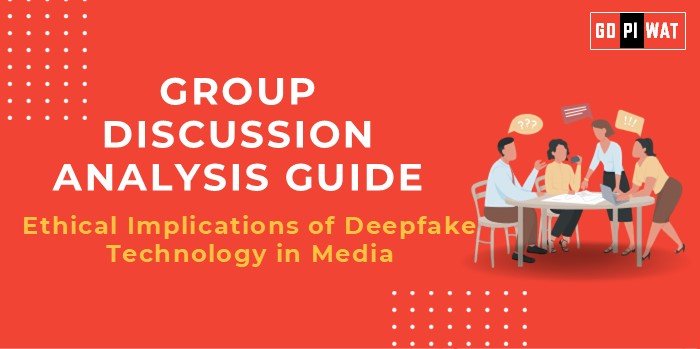📋 Group Discussion Analysis Guide: Ethical Implications of Deepfake Technology in Media
🌐 Introduction to Deepfake Technology
As artificial intelligence continues to revolutionize industries, deepfake technology emerges as both a marvel of innovation and a source of ethical dilemmas.
Topic Background: Originating from advancements in AI, deepfakes use machine learning to create hyper-realistic fake images, videos, and audio. While offering potential in entertainment and education, their misuse raises concerns about misinformation, privacy, and consent.
📊 Quick Facts and Key Statistics
- Global Revenue from Deepfake Detection Technology: Projected to reach $1.5 billion by 2027, indicating the growing need for countermeasures.
- Misinformation Threat: Over 90% of deepfake videos are linked to non-consensual content or propaganda.
- Regulation Gap: As of 2023, only a few countries have implemented laws specific to deepfakes.
- Cost to Create a Deepfake: Dropped significantly from $10,000 in 2018 to under $100, enabling wider access.
👥 Stakeholders and Their Roles
- Technology Companies: Innovating tools for both creating and detecting deepfakes.
- Governments: Regulating misuse and safeguarding citizen rights.
- Media Platforms: Hosting and moderating content to prevent harm.
- Public: Educating themselves about identifying and combating misinformation.
- Academia: Researching AI ethics and mitigation strategies.
🏆 Achievements and Challenges
🎉 Achievements
- Creative Applications: Enhanced movie production through visual effects and digital resurrection of historical figures.
- Education and Training: Simulated environments for training medical professionals and pilots.
- Detection Algorithms: Improved success rates in identifying fake content (accuracy over 95% in trials).
⚠️ Challenges
- Misinformation Proliferation: Deepfakes fuel propaganda, damaging trust in media.
- Legal and Ethical Gaps: Limited regulations fail to address the rapid evolution of the technology.
- Privacy Breaches: Non-consensual videos harm individual reputations globally.
🌍 Global Comparisons
- China: Introduced mandatory labels for AI-generated content in 2023.
- EU: Proposed AI Act addresses synthetic media as part of broader regulations.
📜 Case Studies
- 2022 US Elections: Deepfakes used in political smear campaigns.
- India: Deepfake videos misused for communal discord during elections.
📂 Structured Arguments for Discussion
- Supporting Stance: “Deepfake technology, when responsibly managed, holds immense potential in fields like entertainment and education.”
- Opposing Stance: “The unchecked proliferation of deepfakes threatens democracy, individual privacy, and societal trust.”
- Balanced Perspective: “While deepfakes present opportunities, ethical oversight and robust detection are imperative.”
✨ Effective Discussion Approaches
🔍 Opening Approaches
- Use a thought-provoking statistic: “90% of deepfake content is harmful—how can we regulate this technology responsibly?”
- Present a case study: “In 2022, deepfakes disrupted elections in multiple democracies.”
- Contrast innovation and misuse: “A tool for Hollywood, but a weapon for propagandists—how should society respond?”
🔄 Counter-Argument Handling
- Highlight advancements in detection technology.
- Reference ethical frameworks like transparency and accountability.
- Advocate for public awareness and media literacy.
📈 Strategic Analysis of Strengths and Weaknesses
💪 Strengths
- Creative applications, educational benefits, improving detection.
💡 Opportunities
- Global standardization, corporate responsibility, AI ethics research.
⚡ Weaknesses
- Regulatory gaps, misuse potential, lack of public awareness.
⚠️ Threats
- Misinformation campaigns, reputational harm, escalating legal battles.
📚 Connecting with B-School Applications
- Real-World Applications: Media ethics, AI governance policies, and public relations strategy.
- Sample Interview Questions:
- “How can businesses leverage deepfakes ethically?”
- “What strategies would you recommend to combat misinformation through deepfakes?”
- Insights for B-School Students: Understanding AI’s dual-use nature; focusing on ethical AI as a specialization; exploring regulatory frameworks.


